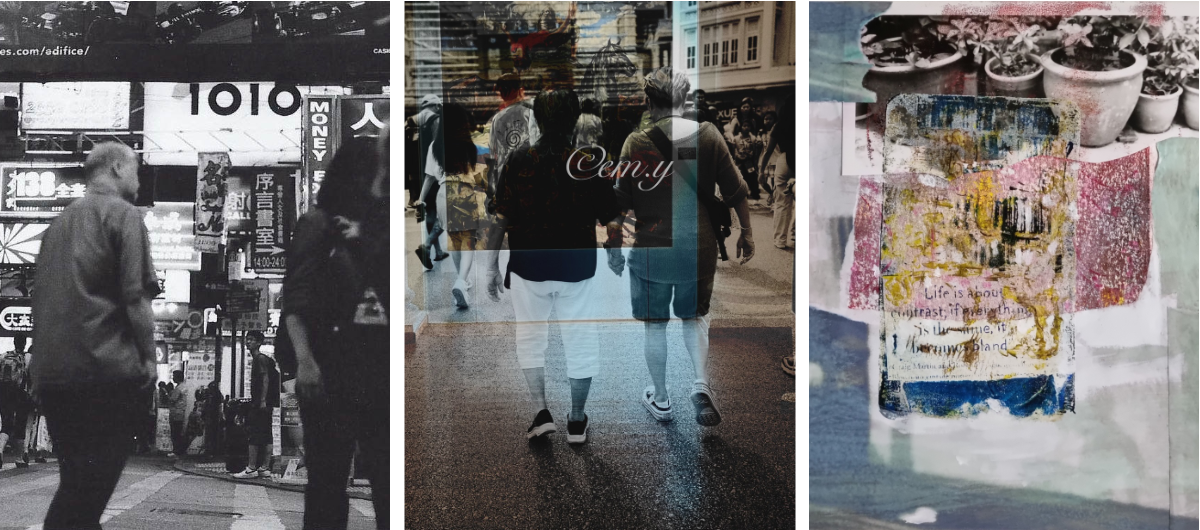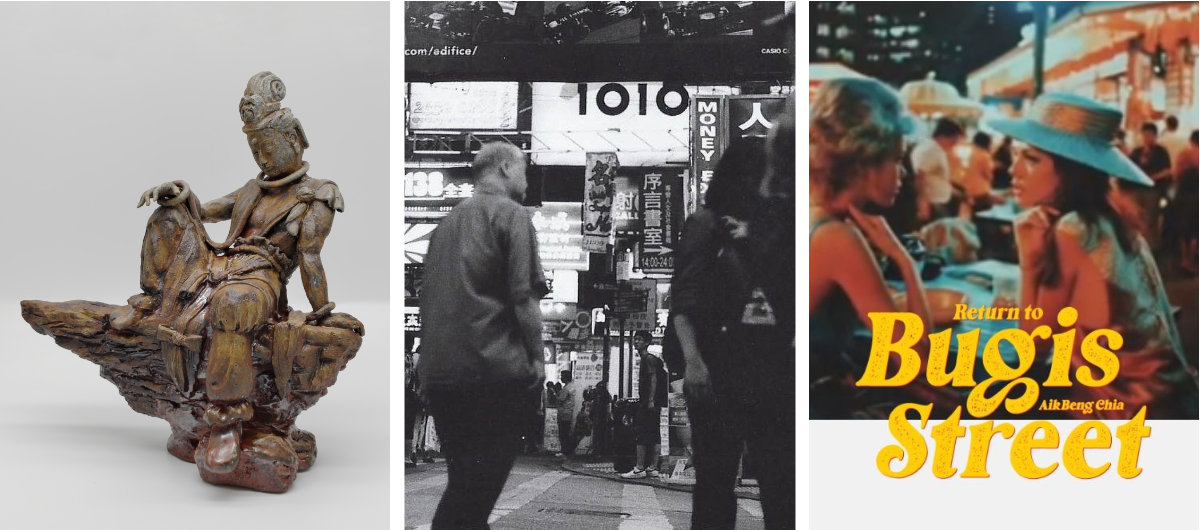Explorations in Time invites viewers to reflect on the continual dialogue between past and present. Curated by Em. Y by Papillon Artelier, the exhibition brings together pottery and photography by Asian artists who reinterpret traditional forms through contemporary sensibilities.
Pottery by Ipoh Wood Firing Team
Dragon kilns were developed in China during the Song dynasty (960-1279). These kilns did not remain in China; they were brought to Malaya in the 20th century by Chinese migrants. In Ipoh, such kilns still exist. In 2024, Alvin Ng, a Singaporean potter, spearheaded Ipoh Wood Firing, guided by Heng Gor and Fatt Gor from Ipoh. This kiln is fueled by wood, which can be unpredictable for temperature control and ash distribution. Unlike the modern electric kilns, which have digital controls that allow precise temperature regulation.
The works exhibited here are by artists involved in the April 2025 firing: Alvin Ng, Carey Wong, Fikret Ercan, Heng Gor, Ken Chang, Lee Chien-Hsing 李建興, Stephanie Zheng Yun, and Yong Hong. These artworks yielded a range of pottery, experimenting with various techniques and clay types, including terracotta, local clay, raku clay, and white clay. Some artists experimented with glazing, some focused on organic shapes, and some explored intricate details of hand-building, especially Ken Chang’s Avalokitesvara Bodhisattva, which emphasised expression and body posture.

Selected pottery pieces from Explorations in Time. Image Credit: Papillon Artelier
It is a common myth that traditional technologies mean sticking to the old way of creating something. Ipoh Wood Firing shows that new ideas and experimentation can still occur in the modern day. Despite being hundreds of years old, Dragon Kiln still fires ceramics today. What differs now is how the artists constantly evolve their experiences and knowledge to create their works.
Photography and AI
Photography is the process of capturing an image using light or similar radiation on light-sensitive materials. The word photography appeared in the 1830s and comes from two words: photos, meaning ‘light’, and graphein, meaning ‘to draw’. Just as pottery has evolved with advancements in kilns, photography has evolved from film to digital photography.
In her series Ordinary People, Em. Y’s works reflect on everyday life. Her photographs are either in black and white or monochrome, as a result of black-and-white and colour negative film. The act of reducing the colour palette evokes a sense of melancholia and reflection. With its mostly monochromatic colours, viewers are encouraged to look at the nuanced, layered narratives of life that are missed amid busyness.

Selected Em. Y’s photography pieces from Explorations in Time. Image Credit: Papillon Artelier
Her photo manipulation works also show how technology has evolved in photography. As spoken with Em. Y, she mentioned that she used photo apps on her phone to create double-exposure photos, especially in Untitled (1) and Untitled (2). Double exposure is not a new method; many photographers have been using it for a long time. Before the existence of smartphones, this effect could only be done with people who had film cameras or computer software, as these were expensive. Now, with smartphones, the barrier to entry for photographers is lower, as basic photo editing features are built into the phone.
Aik Beng Chia’s work Return to Bugis Street attempts to reenact the moments of transgenders in the 70s through generative AI. Upon entering the booth, Yumeji Theme, a soundtrack from the film ‘In the Mood for Love’ was playing in the background. The colour of the video reminds one of Christopher Doyle’s cinematography style. Watching this was unsettling for a few reasons. While AI can be used as a tool to interpret some of our thoughts or recreate memories, the output is clearly AI-generated. The video felt too polished, and after a while, it became a generic generative AI video. Aside from that, one of the questions plaguing generative art is about authorship and authenticity. As the artist prompts and edits the images, it raises questions about the believability of these visuals unless one does their own research on transgender people in Bugis Street.

Still from Return to Bugis Street by Chia Aik Beng. Image Credit: Papillon Artelier
After observing these artworks, three approaches came to mind for Explorations of Time. Firstly, the pottery highlights that the traditional dragon kiln still exists today, but the output is based on the artists’ experiences of the present day. Secondly, the evolving technology in photography reduces the barrier to entry for photographers. In the past, photography was a field for those who could afford expensive equipment and software. In the contemporary context, one is free to explore both analogue and digital photography. Finally, one can relive old memories through AI, though the output is as generic as any other generative AI visuals. In summary, these approaches illustrate that, no matter how much we have advanced in our technology and culture, tradition still has its place in the modern world and can coexist with each other in art-making.
Explorations in Time is on view at 22 Hale Street Heritage Gallery, Ipoh, until 16 November.



